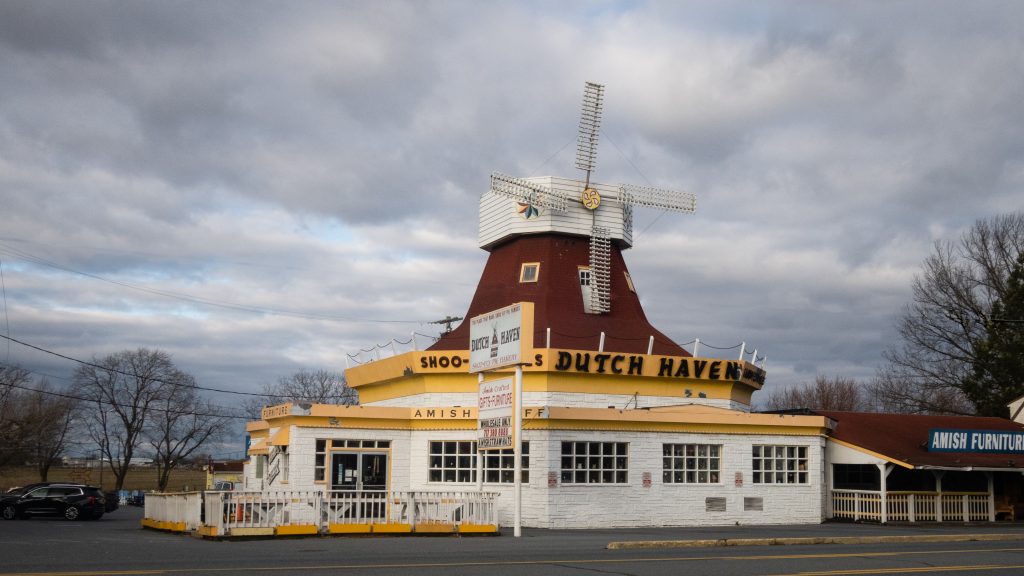Here are too many pictures of the rapids at Ohiopyle State Park, the visitor center, and the Youghiogheny River.







Ryerson Station State Park is in Greene County in the southwestern corner of Pennsylvania, near the West Virginia border. It seems to sit off by itself down in that corner. It is near Moundsville, WV, a place I have been to, but that is a story for another day. The 1,164-acre park features the fanciest state park swimming pool I have ever seen, campground, hiking, fishing, picnicking, and winter activities.







Next we have an interesting feature – the remains of an old reservoir. I don’t think I’ve ever seen one quite like this. You can see where the hole was created in the dam to allow the stream to run again. The lake appears to have been fairly shallow.



Our next stop in the swing through western Pennsylvania is McConnells Mills State Park. The signature of this park is a 19th century gristmill and adjacent covered bridge. It occupies 2,546 acres of the spectacular Slippery Rock Creek Gorge, which is a National Natural Landmark. Created by the draining of glacial lakes thousands of years ago, the gorge has steep sides while the valley floor is littered with huge boulders. Scenic overlooks and waterfalls are popular natural attractions.
The park has distinctive geology. The bedrock formed more than 300 million years ago as layers of sand, mud, and peat built up in what was a coastal area. After becoming rock, these different layers were lifted to the surface in several mountain-building events. The different strengths of these rocks cause them to erode differently, helping to make the varied landscape of the park. The gorge and the dramatic topography of the park were created by glaciers during the past two million years.








The Cleland Rock Scenic Vista – unfortunately this has become a bit overgrown.

The Clarion River area is one of the most scenic in Pennsylvania. One of its jewels is a 13-mile stretch of the the river that flows through Cook Forest State Park and is popular for canoeing, kayaking, and tubing.
The 8,500-acre Cook Forest State Park and 3,136-acre Clarion River Lands lie in Clarion, Forest and Jefferson Counties. The Cook Forest Association was formed in the 1920s to save the few areas of surviving old growth timber. Endorsed by national natural resource groups and Governor Gifford Pinchot, the association raised $200,000, which helped the commonwealth purchase 6,055 acres from A. Cook Sons Company in 1927 for $640,000. Cook Forest became the first Pennsylvania state park acquired to preserve a natural area. It was later designated a National Natural Landmark.






I also visited Clear Creek State Park which is 11 miles from Cook Forest. The park encompasses 1,901 acres in Jefferson County and occupies a scenic portion of the Clear Creek Valley from PA 949 to the Clarion River. It has camping, rustic cabins, and Clarion River access for fishing and boating.





Simon B. Elliott State Park and Parker Dam State Park are two parks that offer great access to the area of the “Pennsylvania Wilds” and the Elk Visitor Center. I wanted to check them out to for potential future trips to the area. The first stop was S.B. Elliott. It was gray and raining when I arrived. This park features a lot of interesting CCC built structures surrounded by the Moshannon State Forest, including rustic cabins.





Parker Dam is not far away from S.B. Elliott. As the DCNR website says “a scenic lake, rustic cabins, quaint campground, and unbounded forest make Parker Dam an ideal spot for a relaxing vacation.” This park is great for access to hiking and mountain biking, including a walk through tornado ravaged woods. The lake offers swimming, boating and fishing. Stay overnight in a cabin or in the campgrounds. You may even see some elk.







I had previously travelled through this area in Union and Clinton Counties but did not have the opportunity to visit all of the state parks. I routed myself through this area on my way to western Pennsylvania. My first stop was Sand Bridge State Park, the smallest state park, which occupies three acres. It is used for picnicking and fishing.



I next made a quick stop at the lake and dam overlook at Raymond B. Winter State Park on my way to McCalls Dam State Park. I had previously been to RB Winter and hope to return to do some camping. This park has a wide variety of activities including hiking, fishing, swimming, camping and mountain biking.


The nearby McCalls Dam State Park is also one of the state’s smallest, consisting of a picnic area along with access to hiking, hunting and fishing in Bald Eagle State Forest. I first stopped at a scenic overlook on McCalls Dam Road on my way to the park. Note that even the state can’t decide if there is an “s” in the name of this park or not.




The last stop in this cluster of parks was Ravensburg State Park. It lies in a narrow gorge carved by Rauchtown Run. It was a popular spot with local Amish couples out for a drive on this Sunday afternoon. This lovely spot provides camping, picnicking, hiking, hunting and fishing opportunities. I managed to miss the entrance into a section of the park, but this is a location which will be easy for me to get back to.




Today’s visit to Lancaster County includes some covered bridged and nearby views. First up is Weaver’s Mill Covered Bridge, which spans the Conestoga River. The 85-foot-long (26 m), 15-foot-wide (4.6 m) bridge was built in 1878 by B. C. Carter and J. F. Stauffer. It is also known as Isaac Shearer’s Mill Bridge. The bridge has a single span, wooden, double Burr arch trusses design with the addition of steel hanger rods. It is painted red, the traditional color of Lancaster County covered bridges, on both the inside and outside. Both approaches to the bridge are painted in the traditional white color. It was listed on the National Register of Historic Places in 1980.



The Bitzer’s Mill Covered Bridge is a covered bridge that is also on the Conestoga River. It is the oldest bridge in the county still in use. A county-owned and maintained bridge, it is also called Martin’s Mill Bridge, Eberly’s Cider Mill Covered Bridge, and Fiand’s/Fiantz’s Covered Bridge.
The bridge has a single span, wooden, double Burr arch trusses design with the addition of steel hanger rods. The deck is made from oak planks. Added later, secondary steel I-beams support the bridge from underneath. The bridge is currently unpainted. It was formerly painted red on the outside, and the inside of the bridge was not painted. Both approaches to the bridge were painted white. In July 2006, the bridge sustained some damage to its sides including some missing or broken panels. The bridge was added to the National Register of Historic Places in 1980.
The bridge was built in 1846 by George Fink and Sam Reamsnyder at a cost of $1,115. They used a single span, wooden, double Burr arch truss construction. The bridge has historically been referred to by a number of names that reflected the various mill owners. In 1962, it was proposed to replace the bridge with a concrete span, but the plan was discontinued after much public outcry.




The Keller’s Mill Covered Bridge is a covered bridge that spans Cocalico Creek. It is also sometimes known as Guy Bard Covered Bridge (after a local jurist) and Rettew’s Covered Bridge (after the person that Rettew’s Road is named). Due to heavy road traffic on the aging, one-lane bridge, construction on a new steel and concrete bridge to bypass the covered bridge occurred in the summer of 2006. The bridge was disassembled and reassembled a few miles downstream to replace an existing one lane bridge. It was located at 40°10′11.4″N 76°12′16.8″W (40.16983, −76.20467) before being disassembled.
Keller’s Mill Covered Bridge was originally built by Elias McMellen in 1873 at a cost of US$2,075. After being swept away in flooding, the bridge was rebuilt in 1891, again by McMellen. It stayed there until it was disassembled and moved in 2006. The bridge was reconstructed in 2009. The bridge was reopened on Middle Creek Road in December, 2010. Keller’s Mill Covered Bridge has a single span, wooden, double Burr arch trusses design with the addition of steel hanger rods. The deck is made from oak planks. The bridge is the only all white bridge in the county, with no red. In fact, just about all covered bridges were whitewashed both inside and out. It is the only bridge to have survived the transition from whitewashing to the red color commonly used in barns throughout the county. The bridge is not painted on the inside.




It’s not that often that one comes across a covered bridge with an associated historic site. Poole Forge, in Eastern Lancaster County, is just such a place. The 26-acre site also has a preserved historic Ironmaster’s mansion, children’s playground, picnic pavilion, ball field, Nature Trail, Riparian Buffers, wildflower meadows, and many beautiful gardens along the Conestoga River. It is a national historic district and was listed on the National Register of Historic Places in 1993.
Poole Forge was part of the iron industry in Lancaster and nearby counties. James Old, a Welshman and iron master, purchased the property in 1775. He established and operated a forge here for twenty years. The pig iron was obtained from nearby furnaces such as Hopewell, Joanna, Elizabeth, and Cornwall. Poole Forge refined the iron, then sold it to blacksmiths, or sent it to markets in Philadelphia, where it was used to make armaments for the Revolutionary War. In 1795, he sold the forge to his son, Davis Old, and over the next half century, it continued operation through many changes of hands. In 1852, iron production was ended. The covered bridge dates to 1859.
First up are views of the covered bridge:
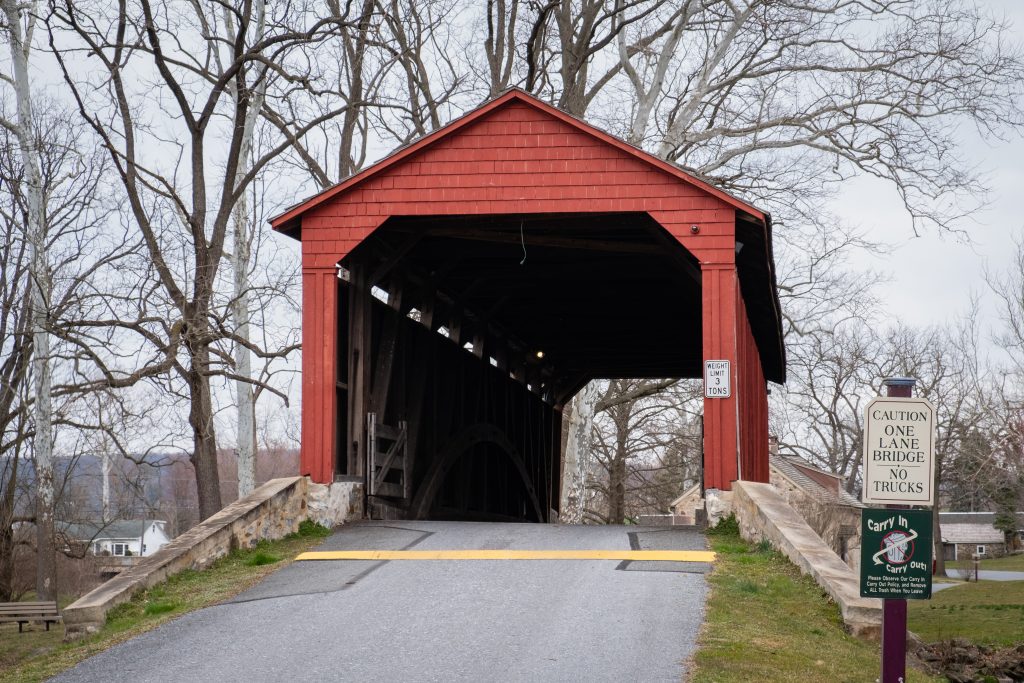

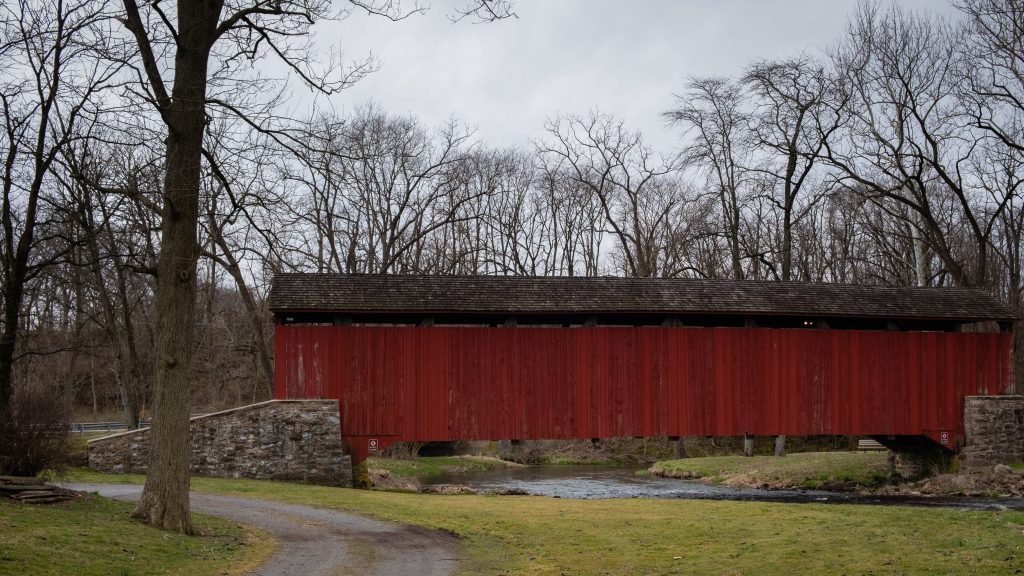

There are multiple fine Federal style buildings at this site.

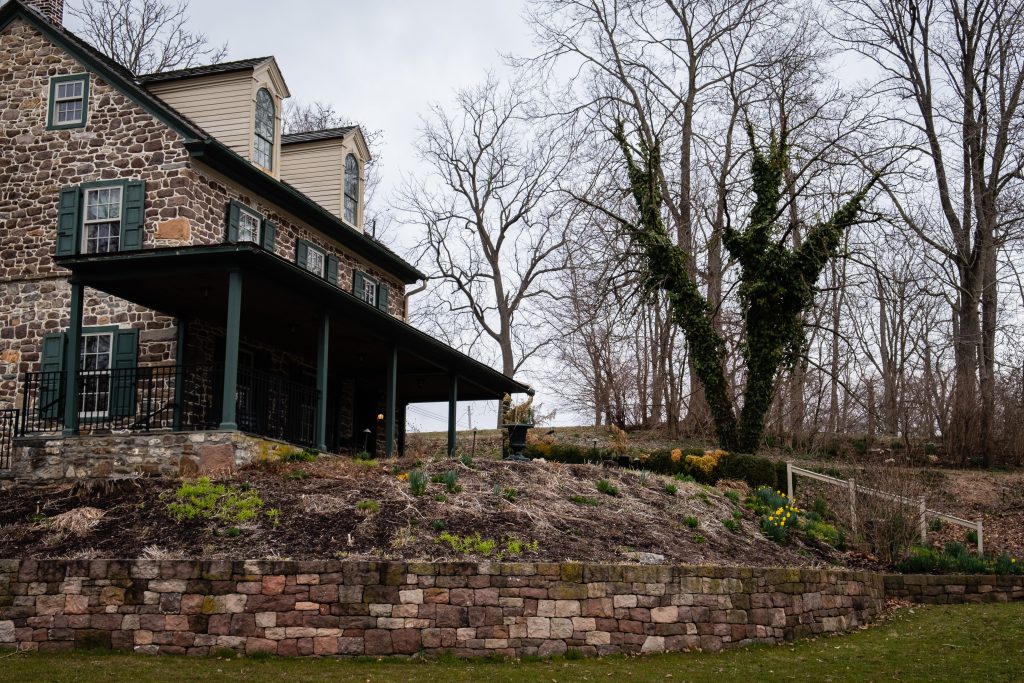
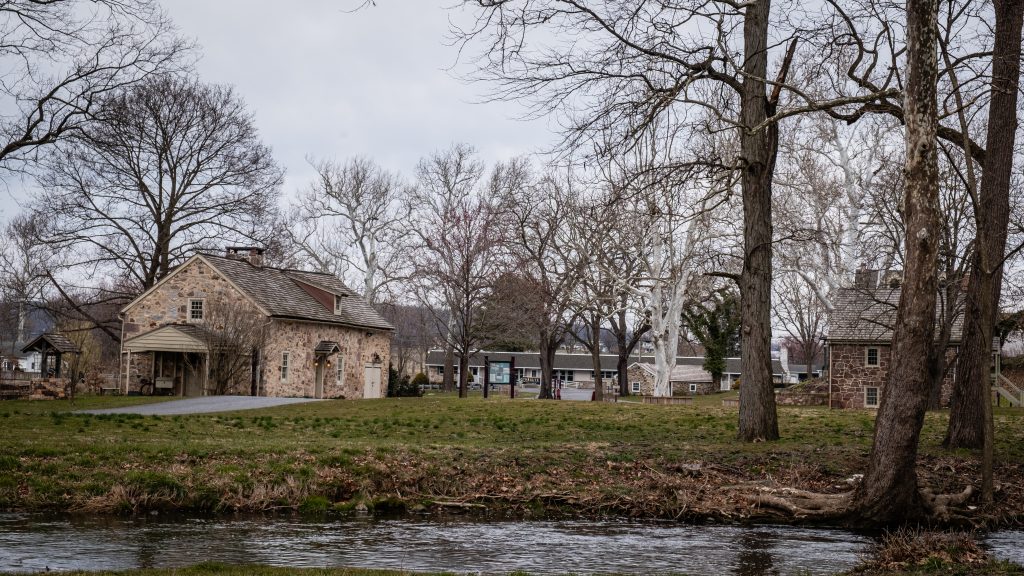
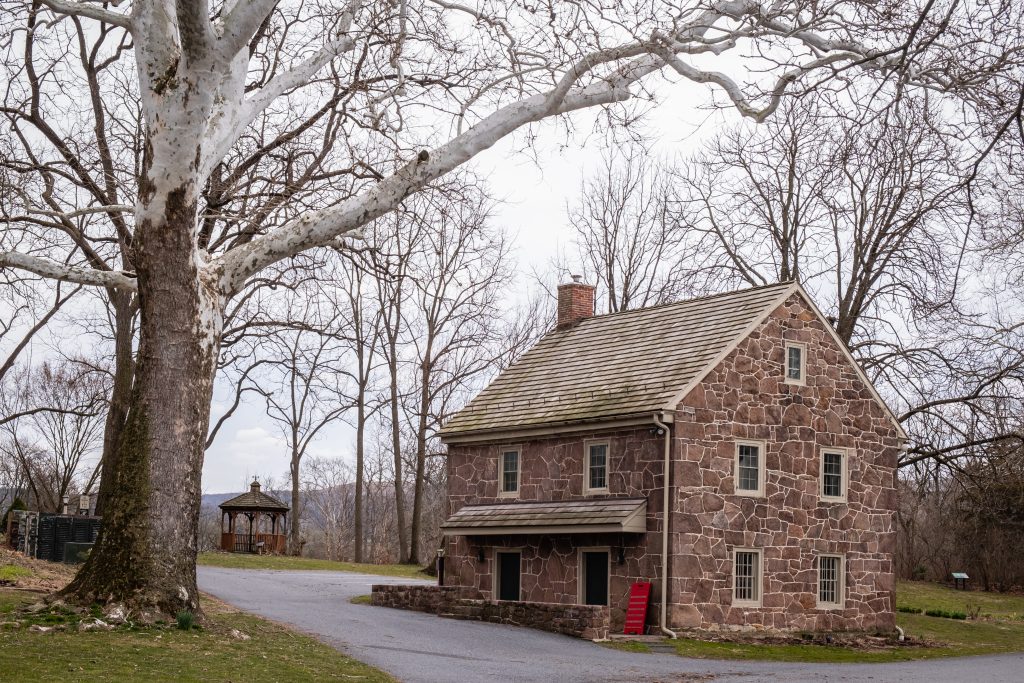

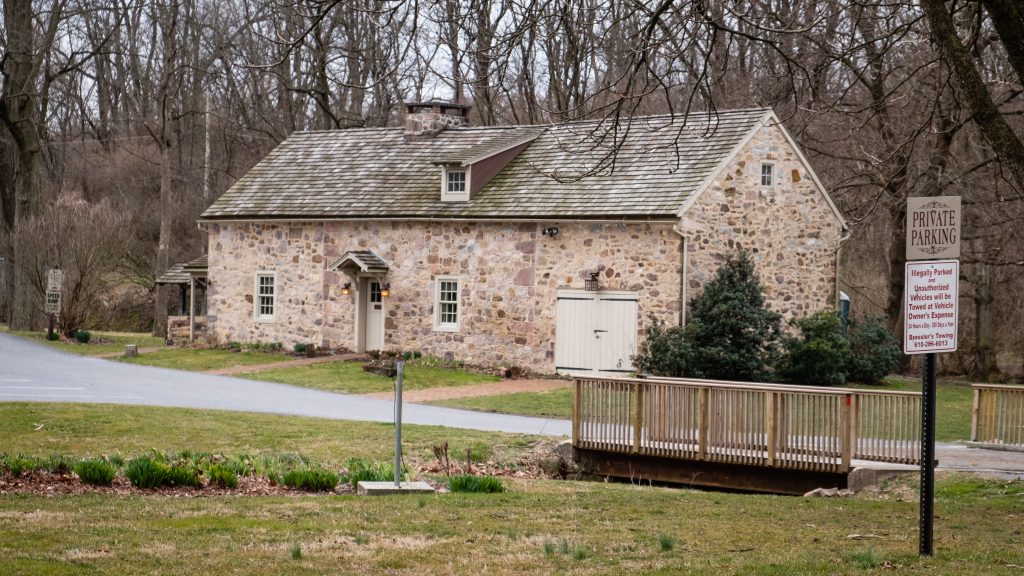
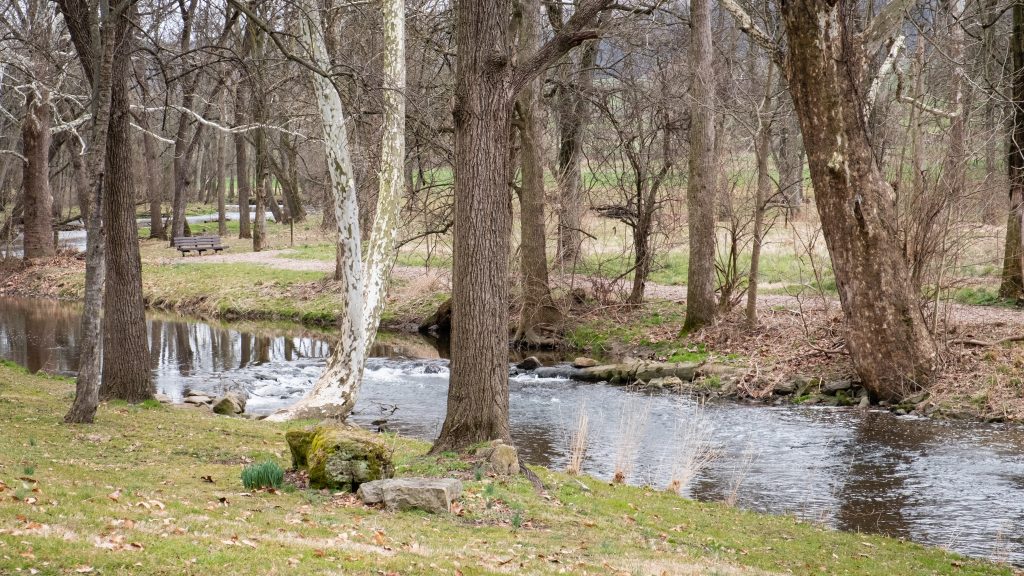
The Leaman’s Place Covered Bridge spans Pequea Creek. A county-owned and maintained bridge, it is also known as Eshelman’s Mill Covered Bridge and Paradise Bridge. The bridge has a single span and a wooden, double Burr arch truss design with the addition of steel hanger rods. The deck is made from oak planks. It is painted red, the traditional color of Lancaster County covered bridges, on both the inside and outside. Both approaches to the bridge are painted in the traditional white color. It is listed on the National Register of Historic Places.
The land that the Leaman’s Place Covered Bridge is situated on was settled by the family of Mary Ferree in 1712, a land grant by William Penn in an area inhabited by the Pequaws Indians. It was not until 1845 that James C. Carpenter built the covered bridge across the Pequea Creek at a cost of $933. In 1893. Elias McMellan rebuilt the covered bridge at a cost of $2,431. The bridge was rehabilitated in 2004.

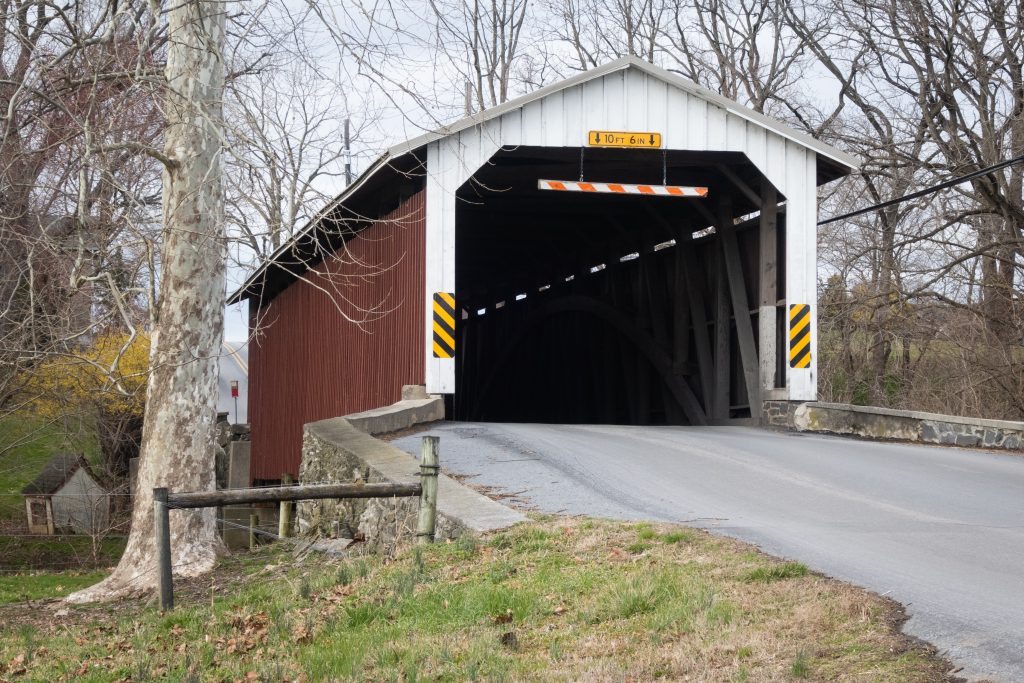

And for something different … Dutch Haven, a well known landmark on Route 30 with a great bakery and gift shop.
